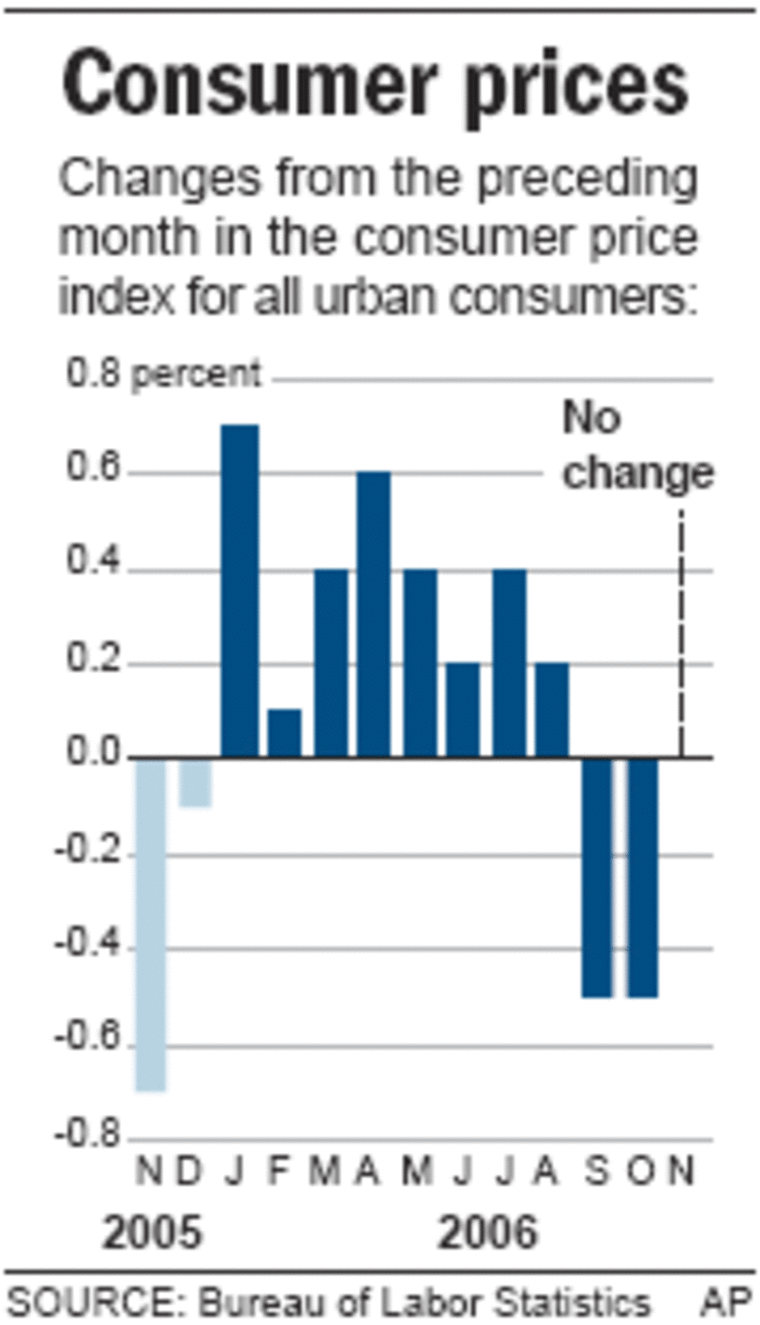Consumer inflation was a no-show in November as Americans enjoyed a third straight month of price relief led by big declines in energy costs. Meanwhile, industrial production staged a rebound led by rising output at auto factories.
The Labor Department reported Friday that consumer prices were unchanged last month, even better than the small 0.2 percent analysts had been expecting. Prices had actually fallen by 0.5 percent in both September and October. The good news in all three months came from tumbling gasoline and other energy costs, which are retreating after a big run-up earlier in the year.
The Federal Reserve said that industrial production was up 0.2 percent in November, the first increase following two months of declines. The rebound was led by a 0.3 percent jump in output at factories as auto plants posted a strong 3.7 percent increase following two months of big declines.
Output at the nation’s mines, a category that includes oil production, fell by 0.2 percent while output at utilities was down 0.1 percent.
Core inflation, which excludes food and energy, was also unchanged in November, the best showing since June. Analysts said that performance would be seen as good news at the Federal Reserve, which is working to keep inflation in check.
The Bush administration was also happy with the inflation news, saying it would mean workers’ pay checks would go farther.

“This is really, obviously, terrific news for consumers, with prices remaining stable and in good shape, and also great news for workers out there who will see less inflation eating into their wages,” said White House Deputy Press Secretary Tony Fratto.
With one month left in 2006, overall inflation is rising at an annual rate of 2.2 percent, down from last year’s 3.4 percent increase. Core inflation, excluding energy and food, has been rising at an annual rate of 2.6 percent this year, an acceleration from the 2.2 percent gain turned in last year.
The Fed’s comfort zone for core inflation is between 1 percent and 2 percent. It has been working to slow the economy enough through higher borrowing costs to reduce core inflation.
At their last meeting of the year on Tuesday, Fed policymakers opted to leave rates unchanged after engineering 17 consecutive rate hikes from June 2004 through June of this year.
"Soft landing" seen
Many economists believe the central bank is on the verge of achieving its hoped-for soft landing and will probably leave rates unchanged until May or June of next year, when the next move is expected to be a rate cut to counter unemployment, which is expected to rise in response to the slowing economy.
For November, overall energy costs were down 0.2 percent following even bigger declines of 7.2 percent in September and 7 percent in October. U.S. prices have retreated after global crude oil prices began falling this summer.
Gasoline pump prices were down 1.6 percent last month but natural gas, the most popular home heating source, saw an increase of 4.7 percent.
Food costs dipped a slight 0.1 percent, the best showing since January 2004. The decline reflected falling prices for vegetables, fruit, dairy products, pork and poultry.
The unchanged performance for core prices reflected a drop of 0.3 percent in clothing costs, a 0.7 percent fall in new car prices and a sharp 4.8 percent decline in airline fares.